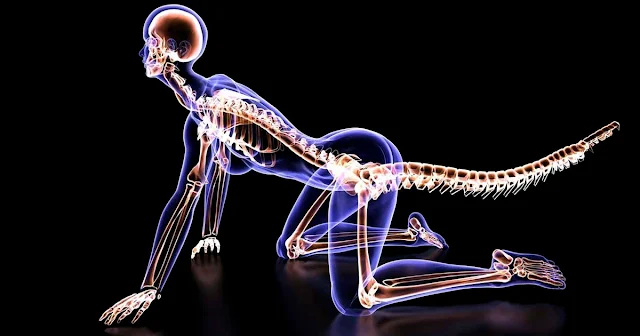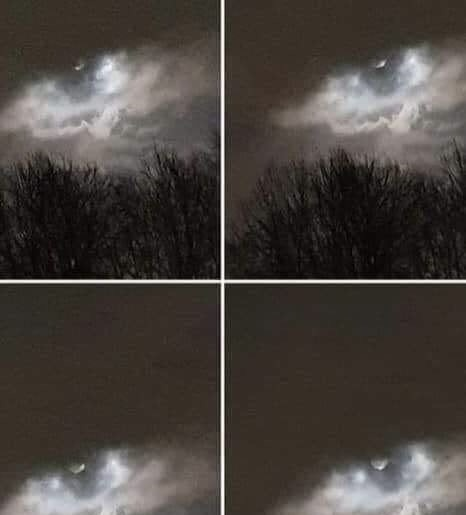One of the most remarkable changes in human evolution is the loss of our tails, a transformation that occurred around 25 million years ago. This pivotal shift not only altered the trajectory of our species but also marked a significant moment in the evolutionary history of primates. While scientists have long speculated on why humans lost their tails, the genetic cause has remained elusive—until now. A recent study published in Nature has finally uncovered the genetic factors responsible for this evolutionary change.

The Quest to Understand Tail Loss
The journey to unravel the mystery of human tail loss began in an unexpected way. Bo Xia, a graduate student at New York University, was inspired to investigate the origins of the human tailbone after injuring his own coccyx. This personal curiosity led Xia and his team to embark on a groundbreaking scientific investigation.
Through careful research, the team focused on the TBXT gene, which plays a crucial role in regulating tail length in various species. Their research revealed a unique genetic mutation within this gene, providing a major breakthrough in understanding human evolution.
The Role of Jumping Genes
A key aspect of this discovery lies in the role of Alu elements, often called “jumping genes.” These genetic elements, specific to primates, can move within the genome and cause significant changes. The researchers found that Alu elements inserted themselves into the TBXT gene, triggering a chain reaction that led to the loss of our tails.
This insertion activated a process known as alternative splicing, where RNA molecules are cut and restructured, which ultimately led to the deletion of a crucial exon. This change altered the structure and function of the resulting protein, leading to the tail loss seen in humans.
Validation Through Mice Studies
To confirm their findings, the researchers engineered laboratory mice with the same genetic mutations found in humans and apes. These genetically altered mice lost their tails, providing compelling evidence that the identified mutation plays a crucial role in the absence of tails in humans and other primates.
However, the study also uncovered a downside to tail loss: an increased risk of neural tube defects, such as spina bifida. This finding highlights the complex balance between evolutionary benefits and potential genetic trade-offs.
The Broader Implications
This discovery has profound implications not just for understanding human evolution, but also for human anatomy and health. The loss of our tails was not a random event but a genetic adaptation with lasting consequences. It illustrates the complex relationship between genetic changes and the way they shape our physiology over time.
As we continue to study our evolutionary past, these findings remind us of the intricate process of natural selection and genetic innovation that has shaped humanity. This breakthrough also underscores the power of scientific inquiry in uncovering the mysteries of our origins, offering insight into the past that can help us understand our future.
The identification of the genetic reasons behind tail loss is a testament to the persistence of scientific exploration and the ongoing quest for knowledge about our evolutionary journey.
Man captures glowing figure shining through clouds

For a great number of people, it is a sign.
Regardless of one’s religious affiliation or lack thereof, there are events and relationships in life that give us the feeling that they are a part of something bigger.
It is necessary to avoid doubting the things that happen or the difficulties that may come up on the path in order to have faith in God.
Italian photographer Alfredo Lo Brutto recently shared a shot of a figure he had captured in the sky on social media. The figure had a striking resemblance to the Christ the Redeemer statue in Rio de Janeiro, Brazil. Reaching a height of thirty meters, this magnificent statue is not only the biggest representation of Jesus on the planet but also the highest art deco statue ever created.

Alfredo managed to spark some controversy when he shared the amazing snapshot he had taken over the Tyrrhenian Sea. Some say that the figure is just the clouds with the sun beaming through them, while others think it is divine and a sign from God.
https://googleads.g.doubleclick.net/pagead/ads?client=ca-pub-3764810839868565&output=html&h=183&slotname=8851483697&adk=3156180859&adf=1768296685&pi=t.ma~as.8851483697&w=730&abgtt=6&fwrn=4&lmt=1726161191&rafmt=11&format=730×183&url=https%3A%2F%2Favokaddo.com%2F2024%2F07%2F30%2Fman-captures-glowing-figure-shining-through-clouds%2F%3Ffbclid%3DIwY2xjawFQAHVleHRuA2FlbQIxMAABHVTICSbl18T5icj7E1hZNK_O_GYO-78MJiVIJLRTWHciArYtk09h-_emxQ_aem_rWQfD2LDid9iahBImEjyKQ&wgl=1&uach=WyJXaW5kb3dzIiwiMC4zLjAiLCJ4ODYiLCIiLCIxMDkuMC41NDE0LjE2OCIsbnVsbCwwLG51bGwsIjY0IixbWyJOb3RfQSBCcmFuZCIsIjk5LjAuMC4wIl0sWyJHb29nbGUgQ2hyb21lIiwiMTA5LjAuNTQxNC4xNjgiXSxbIkNocm9taXVtIiwiMTA5LjAuNTQxNC4xNjgiXV0sMF0.&dt=1726161191021&bpp=1&bdt=212&idt=234&shv=r20240905&mjsv=m202409050101&ptt=9&saldr=aa&abxe=1&cookie=ID%3Dd6f422181fa8e320%3AT%3D1712754368%3ART%3D1726159628%3AS%3DALNI_MbQ8K8Uz_tQiOWk9_ho73iGWbUvXg&gpic=UID%3D00000de663175333%3AT%3D1712754368%3ART%3D1726159628%3AS%3DALNI_MZzkvLBsYSBf99BTmrLqXAWredf6A&eo_id_str=ID%3D880422cb866d8cdc%3AT%3D1712754368%3ART%3D1726159628%3AS%3DAA-AfjYIkHBaiiV25sK_LhuhTK3y&prev_fmts=0x0%2C1100x280%2C730x183&nras=1&correlator=5233316272663&frm=20&pv=1&rplot=4&u_tz=420&u_his=1&u_h=768&u_w=1360&u_ah=728&u_aw=1360&u_cd=24&u_sd=0.75&dmc=8&adx=164&ady=3062&biw=1428&bih=790&scr_x=0&scr_y=0&eid=44759876%2C44759927%2C44759837%2C31086865%2C44795922%2C95332585%2C95338229%2C95341663%2C95342458%2C95341671&oid=2&pvsid=226025647662512&tmod=144301510&uas=0&nvt=1&ref=https%3A%2F%2Fl.facebook.com%2F&fc=1920&brdim=175%2C6%2C175%2C6%2C1360%2C0%2C1104%2C713%2C1450%2C790&vis=1&rsz=%7C%7CopeEbr%7C&abl=CS&pfx=0&fu=128&bc=31&bz=0.76&psd=W251bGwsbnVsbCxudWxsLDNd&ifi=4&uci=a!4&btvi=2&fsb=1&dtd=241
https://googleads.g.doubleclick.net/pagead/ads?client=ca-pub-3764810839868565&output=html&h=183&slotname=2267562348&adk=1229871852&adf=4023652860&pi=t.ma~as.2267562348&w=730&abgtt=6&fwrn=4&lmt=1726161191&rafmt=11&format=730×183&url=https%3A%2F%2Favokaddo.com%2F2024%2F07%2F30%2Fman-captures-glowing-figure-shining-through-clouds%2F%3Ffbclid%3DIwY2xjawFQAHVleHRuA2FlbQIxMAABHVTICSbl18T5icj7E1hZNK_O_GYO-78MJiVIJLRTWHciArYtk09h-_emxQ_aem_rWQfD2LDid9iahBImEjyKQ&wgl=1&uach=WyJXaW5kb3dzIiwiMC4zLjAiLCJ4ODYiLCIiLCIxMDkuMC41NDE0LjE2OCIsbnVsbCwwLG51bGwsIjY0IixbWyJOb3RfQSBCcmFuZCIsIjk5LjAuMC4wIl0sWyJHb29nbGUgQ2hyb21lIiwiMTA5LjAuNTQxNC4xNjgiXSxbIkNocm9taXVtIiwiMTA5LjAuNTQxNC4xNjgiXV0sMF0.&dt=1726161191022&bpp=1&bdt=213&idt=303&shv=r20240905&mjsv=m202409050101&ptt=9&saldr=aa&abxe=1&cookie=ID%3Dd6f422181fa8e320%3AT%3D1712754368%3ART%3D1726161191%3AS%3DALNI_MbQ8K8Uz_tQiOWk9_ho73iGWbUvXg&gpic=UID%3D00000de663175333%3AT%3D1712754368%3ART%3D1726161191%3AS%3DALNI_MZzkvLBsYSBf99BTmrLqXAWredf6A&eo_id_str=ID%3D880422cb866d8cdc%3AT%3D1712754368%3ART%3D1726161191%3AS%3DAA-AfjYIkHBaiiV25sK_LhuhTK3y&prev_fmts=0x0%2C1100x280%2C730x183%2C730x183&nras=1&correlator=5233316272663&frm=20&pv=1&rplot=4&u_tz=420&u_his=1&u_h=768&u_w=1360&u_ah=728&u_aw=1360&u_cd=24&u_sd=0.75&dmc=8&adx=164&ady=3086&biw=1428&bih=790&scr_x=0&scr_y=0&eid=44759876%2C44759927%2C44759837%2C31086865%2C44795922%2C95332585%2C95338229%2C95341663%2C95342458%2C95341671&oid=2&pvsid=226025647662512&tmod=144301510&uas=0&nvt=1&ref=https%3A%2F%2Fl.facebook.com%2F&fc=1920&brdim=175%2C6%2C175%2C6%2C1360%2C0%2C1104%2C713%2C1450%2C790&vis=1&rsz=%7C%7CopeEbr%7C&abl=CS&pfx=0&fu=128&bc=31&bz=0.76&psd=W251bGwsbnVsbCxudWxsLDNd&ifi=5&uci=a!5&btvi=3&fsb=1&dtd=539
https://googleads.g.doubleclick.net/pagead/ads?gdpr=0&client=ca-pub-3764810839868565&output=html&h=183&slotname=3197500636&adk=2327420882&adf=2222426695&pi=t.ma~as.3197500636&w=730&abgtt=6&fwrn=4&lmt=1726161381&rafmt=11&format=730×183&url=https%3A%2F%2Favokaddo.com%2F2024%2F07%2F30%2Fman-captures-glowing-figure-shining-through-clouds%2F%3Ffbclid%3DIwY2xjawFQAHVleHRuA2FlbQIxMAABHVTICSbl18T5icj7E1hZNK_O_GYO-78MJiVIJLRTWHciArYtk09h-_emxQ_aem_rWQfD2LDid9iahBImEjyKQ&wgl=1&uach=WyJXaW5kb3dzIiwiMC4zLjAiLCJ4ODYiLCIiLCIxMDkuMC41NDE0LjE2OCIsbnVsbCwwLG51bGwsIjY0IixbWyJOb3RfQSBCcmFuZCIsIjk5LjAuMC4wIl0sWyJHb29nbGUgQ2hyb21lIiwiMTA5LjAuNTQxNC4xNjgiXSxbIkNocm9taXVtIiwiMTA5LjAuNTQxNC4xNjgiXV0sMF0.&dt=1726161191022&bpp=4&bdt=212&idt=308&shv=r20240905&mjsv=m202409050101&ptt=9&saldr=aa&abxe=1&cookie=ID%3Dd6f422181fa8e320%3AT%3D1712754368%3ART%3D1726161191%3AS%3DALNI_MbQ8K8Uz_tQiOWk9_ho73iGWbUvXg&gpic=UID%3D00000de663175333%3AT%3D1712754368%3ART%3D1726161191%3AS%3DALNI_MZzkvLBsYSBf99BTmrLqXAWredf6A&eo_id_str=ID%3D880422cb866d8cdc%3AT%3D1712754368%3ART%3D1726161191%3AS%3DAA-AfjYIkHBaiiV25sK_LhuhTK3y&prev_fmts=0x0%2C1100x280%2C730x183%2C730x183%2C730x183%2C1428x790%2C730x280%2C1005x124&nras=4&correlator=5233316272663&frm=20&pv=1&rplot=4&u_tz=420&u_his=1&u_h=768&u_w=1360&u_ah=728&u_aw=1360&u_cd=24&u_sd=0.75&dmc=8&adx=164&ady=3261&biw=1428&bih=790&scr_x=0&scr_y=400&eid=44759876%2C44759927%2C44759837%2C31086865%2C44795922%2C95332585%2C95338229%2C95341663%2C95342458%2C95341671&oid=2&psts=AOrYGsm4WzMEyxmRYcBIgCJyIcAKL9U73KltA3LaBx9HStsRjvaAv50D31ceLpm7jtY71vnJTFZviLSskGDiqjmF1wKyz5igrgTTiKmT6lol4v4Y7NiifA%2CAOrYGsnljeMju8RyefWLId2xa62vGB7Cw_Tt_m4O5iMSV_vOeIy8qv4VgE2ljgbeo59GZXL13d5VE8qmkAp187wtDj3cKCYB&pvsid=226025647662512&tmod=144301510&uas=0&nvt=1&ref=https%3A%2F%2Fl.facebook.com%2F&fc=1920&brdim=175%2C6%2C175%2C6%2C1360%2C0%2C1104%2C713%2C1450%2C790&vis=1&rsz=%7C%7CopeEbr%7C&abl=CS&pfx=0&fu=128&bc=31&bz=0.76&psd=W251bGwsbnVsbCxudWxsLDNd&ifi=6&uci=a!6&btvi=6&fsb=1&dtd=M
People have expressed different opinions about pictures that have surfaced online before, and this time, there are a sizable number of people on both sides of the debate.

The view enthralled me totally. “I don’t usually post images on social media, but when I took this one, I instantly felt like I wanted other people to see it because it was so beautiful,” Alfredo told Daily Mail. “Since I don’t share many pictures, I don’t share them on social media very often.”
We can all agree that this image is extraordinary because it portrays the beauty of the natural world in which we live, even if you don’t think you can see a picture of Jesus in it.

What position do you occupy? What’s in front of your eyes? Do you believe there may be a connection between this sign and higher powers?
Please SHARE this information with your family members on Facebook; it would be greatly appreciated.



Leave a Reply